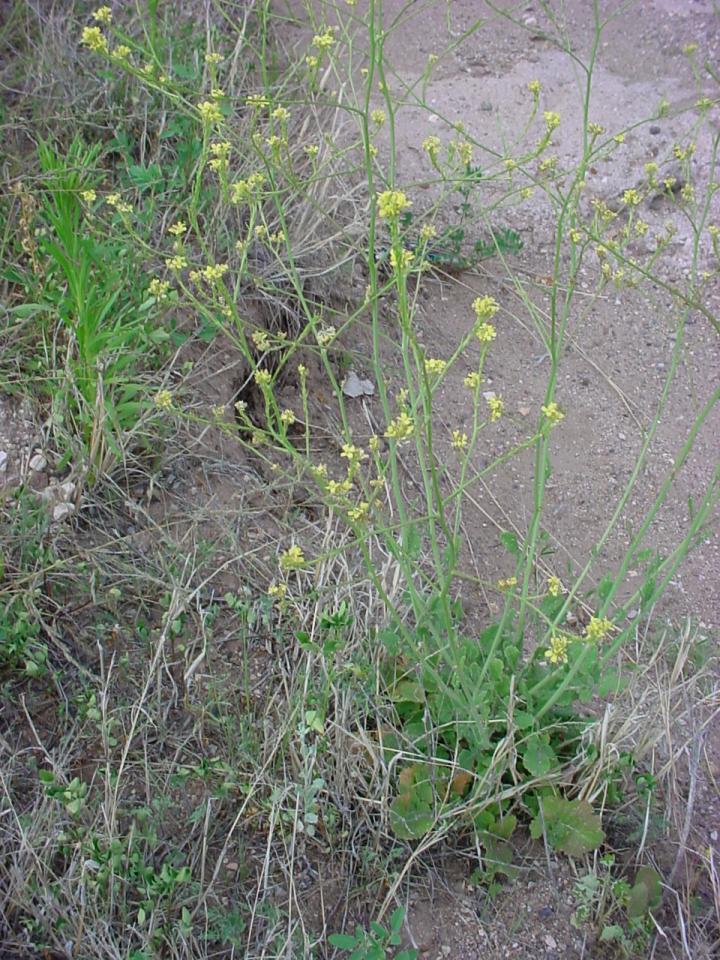Brassica
|
Family: Brassicaceae |
Annuals, biennials, or, rarely, perennials; not scapose; glabrous, glabrescent, or pubescent. Stems erect, unbranched or branched distally. Leaves basal and cauline; petiolate or sessile; basal (persistent in B. tournefortii), rosulate or not, petiolate, blade margins entire, dentate, or lyrate-pinnatifid; cauline petiolate or sessile, blade (base sometimes auriculate or amplexicaul), margins entire, dentate, lobed, or sinuate-serrate. Racemes (corymbose), considerably elongated in fruit. Fruiting pedicels erect, spreading, ascending or divaricately-ascending, often slender. Flowers: sepals usually erect or ascending, rarely spreading, oblong [ovate], lateral pair usually saccate basally; petals yellow to orange-yellow [rarely white], obovate, ovate, elliptic, or oblanceolate, claw often differentiated from blade, (sometimes attenuate basally, apex rounded or emarginate); stamens tetradynamous; filaments slender; anthers oblong or ovate, (apex obtuse); nectar glands confluent or not, median glands present. Fruits siliques, dehiscent, sessile or stipitate, segments 2, linear, torulose or smooth, terete, 4-angled, or latiseptate; (terminal segment seedless or 1-3-seeded, usually filiform or conic, rarely cylindrical); valves each prominently 1-veined, glabrous; replum rounded; septum complete; ovules [4-]10-50 per ovary; stigma entire or 2-lobed. Seeds uniseriate, plump, not winged, globose; seed coat (reticulate or reticulate-alveolate), mucilaginous or not when wetted; cotyledons conduplicate. x = 7, 8, 9, 10, 11. Sep usually erect to ascending, saccate at base; pet yellow (our spp.), obovate, clawed; staminal glands 4, rounded, evident; anthers oblong; ovary subcylindric, scarcely narrowed to the short style; ovules several or many in one row in each locule; stigma capitate; fr subterete or angled, ±elongate, often torulose, terminated by a sterile, slender, terete to angular beak, this nerveless or 1-nerved on each side; valves with a prominent midnerve, the other nerves much weaker, scarcely parallel, often anastomosing; cotyledons conduplicate; seeds large, subglobose, in one row in each locule; coarse, weedy annuals and biennials, at least the lower lvs pinnatifid, the fls usually conspicuous. Dwarf specimens of all our spp. occur under unfavorable conditions and are not provided for in the descriptions. 35, Old World. Gleason, Henry A. & Cronquist, Arthur J. 1991. Manual of vascular plants of northeastern United States and adjacent Canada. lxxv + 910 pp. ©The New York Botanical Garden. All rights reserved. Used by permission. |

